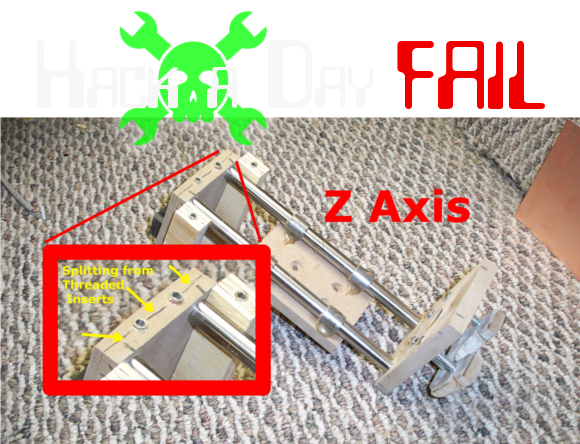
Anyone who’s built their own CNC machine from scratch will tell you that it’s no walk in the park. Heck, even commercially available (but hobby priced) 3D printers are no picnic to get running reliably. This offering is the tale of how [Brian Amos] failed at building a CNC mill over and over again. But hey, that ‘over and over again’ part is what makes great hackers. He not only documented what didn’t work, but shows the hacks that he tried using to work through each scrape.
We think the most interesting bits are in his second post, but start with the first one (it’s a quick read) to get the background on the project. The real issues start with a common one: a bed that is severely unlevel compared to the cutting head’s axes. The solution is to use a sacrificial bed, milling it out to match the surface to the tool. This exposed the next issue which is a misaligned Z axis. Some give in the entire support structure means problems with slop and backlash. And there’s even a very creative spiral-cut coupler to help account for alignment issues between the lead screws and motors.
The nice thing about building a mill is that you can turn around a use it to mill more accurate replacement parts. Just keep telling yourself that as you toil away at a project that just won’t seem to work!
We’re already looking for next week’s fail post topic. Help keep the fun rolling by writing about your past failures and sending us a link to the story.












